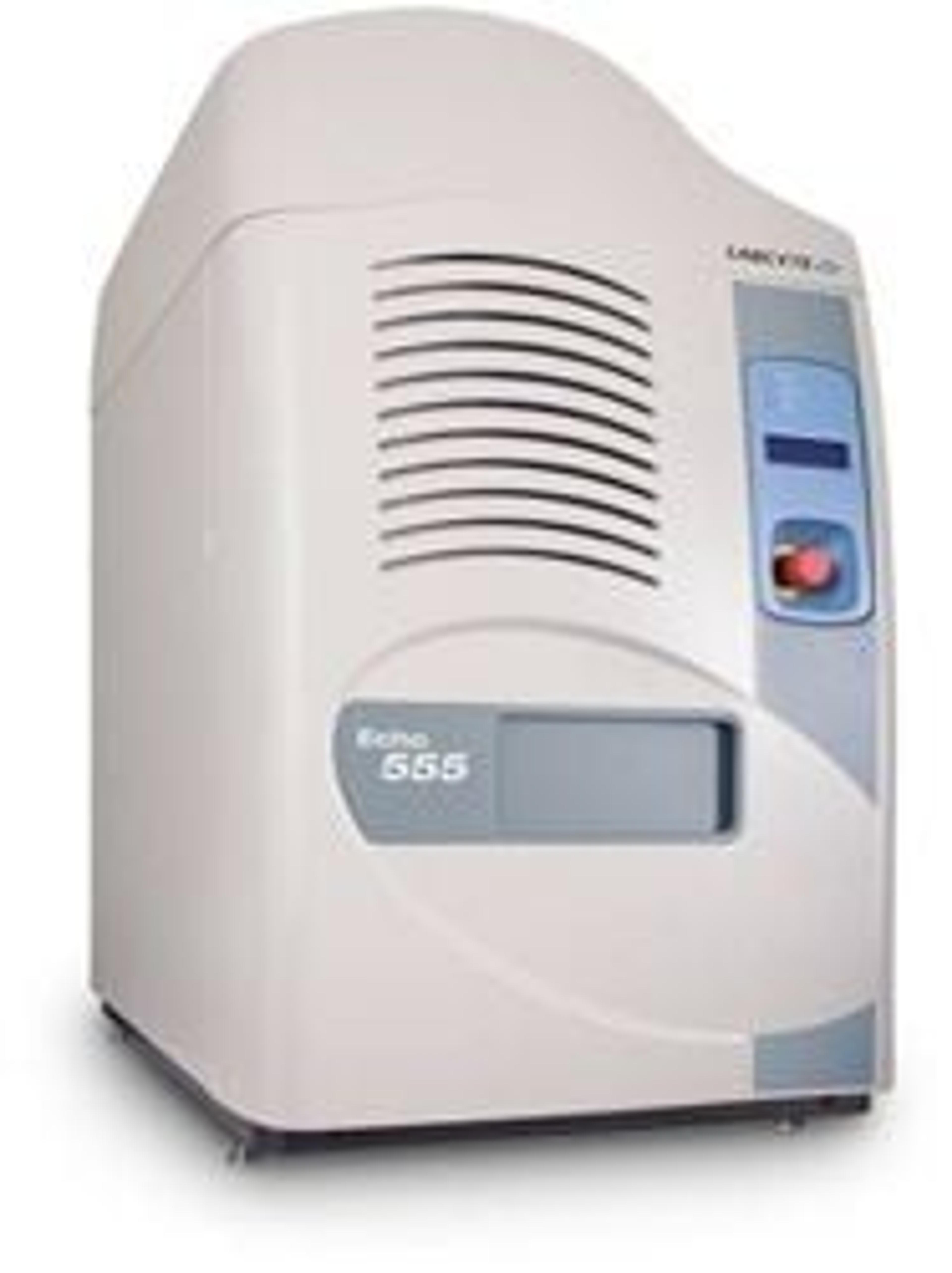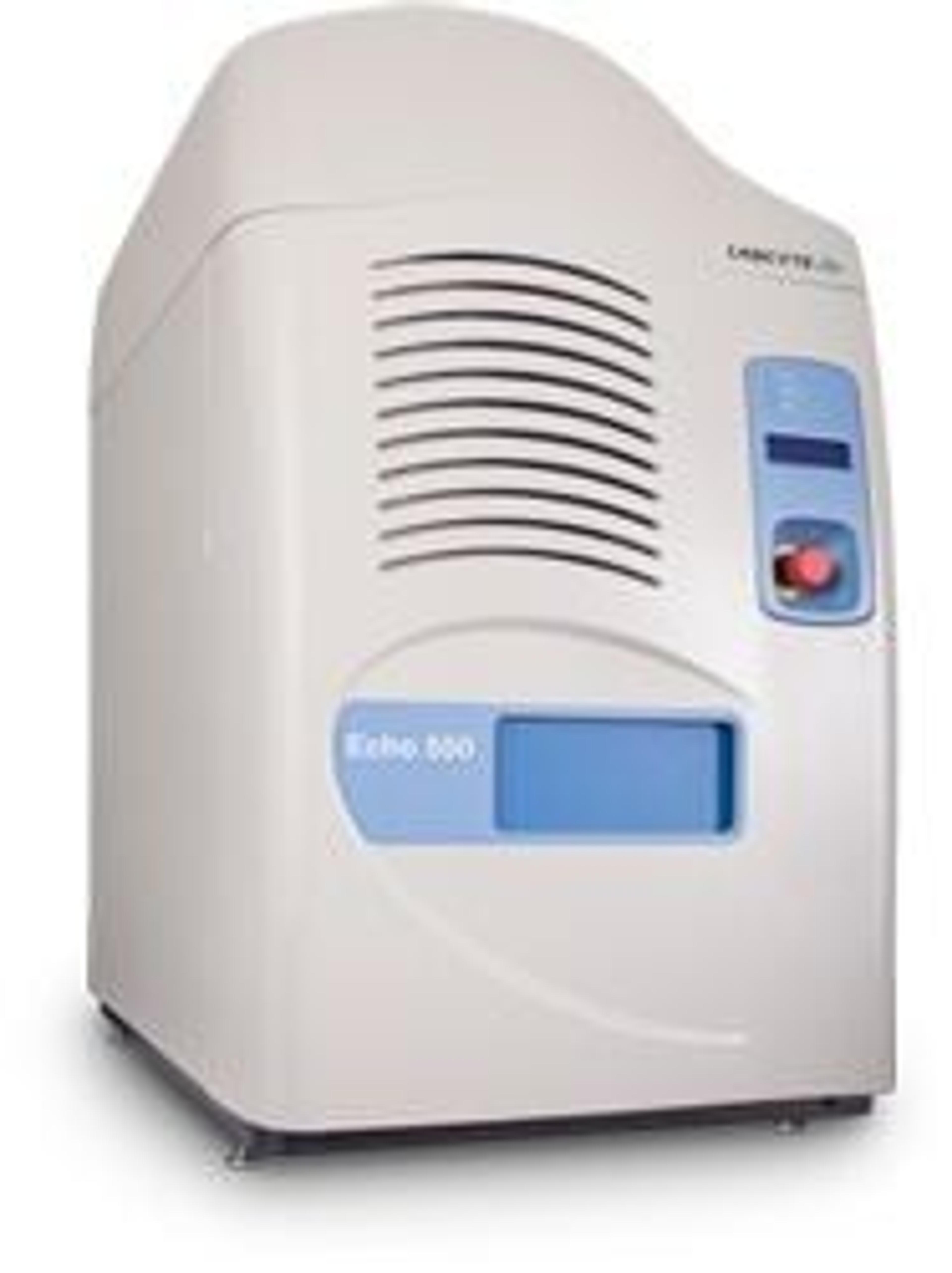Moving Liquids with Sound Using Labcyte Technology Finds Drug Candidates that Traditional Lab Techniques Miss
4 May 2013How do researchers know whether new molecules will have a positive or negative effect? How much does the technique for moving a liquid affect the results? What about testing compounds for their environmental or health impacts: Is one liquid handling process better than another when it comes to accuracy of the data?
A paper published by the journal PLOS ONE, May 1, 2013, demonstrates that the technique used to transfer compound solutions does indeed matter. The three researchers who wrote “Dispensing Processes Impact Apparent Biological Activity as Determined by Computational and Statistical Analyses”, (http://dx.plos.org/10.1371/journal.pone.0062325) conclude that if traditional techniques introduce errors early in the scientific process, the implications are vast.
“Biologists, chemists, and computational modelers who help design compounds—all types of scientists should be aware of this issue,” said study co-author Sean Ekins, senior consultant with Collaborations in Chemistry. “From our early training, every biologist learns to use pipettes, devices like eye-droppers, to move liquids.”
Traditional testing by drug companies uses pipettes to create serial dilutions before assessing biological activity. A newer method uses sound to transfer liquids in microscopic volumes without pipettes. This “acoustic” method minimizes significant errors in the resulting data, according to the new study.
“Among other problems, compounds can stick to pipettes and not get transferred,” said Ekins. “Hardly anyone questions the technique, but those doing drug discovery may see issues with their data and not know why.”
To improve drug efficacy and time-to-patient, researchers need the process to be effective and accurate. Scientists worldwide depend on shared databases for their research, yet they rarely know how the underlying data was produced. The study concluded that it is critical to consider that a key technique, moving liquid via pipettes, may be introducing significant errors.
“All data from the past and much of the data generated today is based on experiments done with traditional pipetting and serial dilutions,” said Ekins. “Errors in this first stage are carried forward into computational models that are used to guide drug discovery. Scientists who are trying to design effective compounds might be doing so on false models. Our findings suggest that moving liquids with sound could improve screening results and prevent the development of misleading models.”
The authors developed their analyses, in part, using data published by AstraZeneca in US Patent 7,718,653. The researchers measured the potency of a class of several anti-cancer drugs, which always measured higher when the compounds were transferred with acoustic dispensing compared to pipette transfer.
“The paper shows that compounds yield different results depending on whether they were transferred by sound or pipette,” said Joe Olechno co-author of the paper and senior research fellow at Labcyte Inc. “Other researchers have seen similar results and have adopted acoustic dispensing. It became even more exciting when we found that the acoustic computational modeling correctly predicted which compounds would be the most potent while the serial dilution model could not.”
A method that allows researchers to more accurately predict the best compound to treat a disease could have a major impact on the industry and society. By comparing the models created from pipette-dispensing results with the crystal structures of molecules in AstraZeneca’s protein target, the team showed that the acoustic technique was most consistent with biological structures.
“This work highlights that data generated with traditional technologies like pipettes may be suspect. More investigation of the observations is required,” said Antony Williams, of the Royal Society of Chemistry and the third co-author of the paper. “But clearly, how we move liquids has a dramatic impact on the biological activities measured and much caution when using pipettes is advised.”
“Incorrect processes have the potential to significantly affect chemical testing in many areas,” Ekins said. He urges scientists to ask questions about the data they use. How much of a database is generated using pipette methods? How much is erroneous? How does it affect all subsequent science and conclusions?


